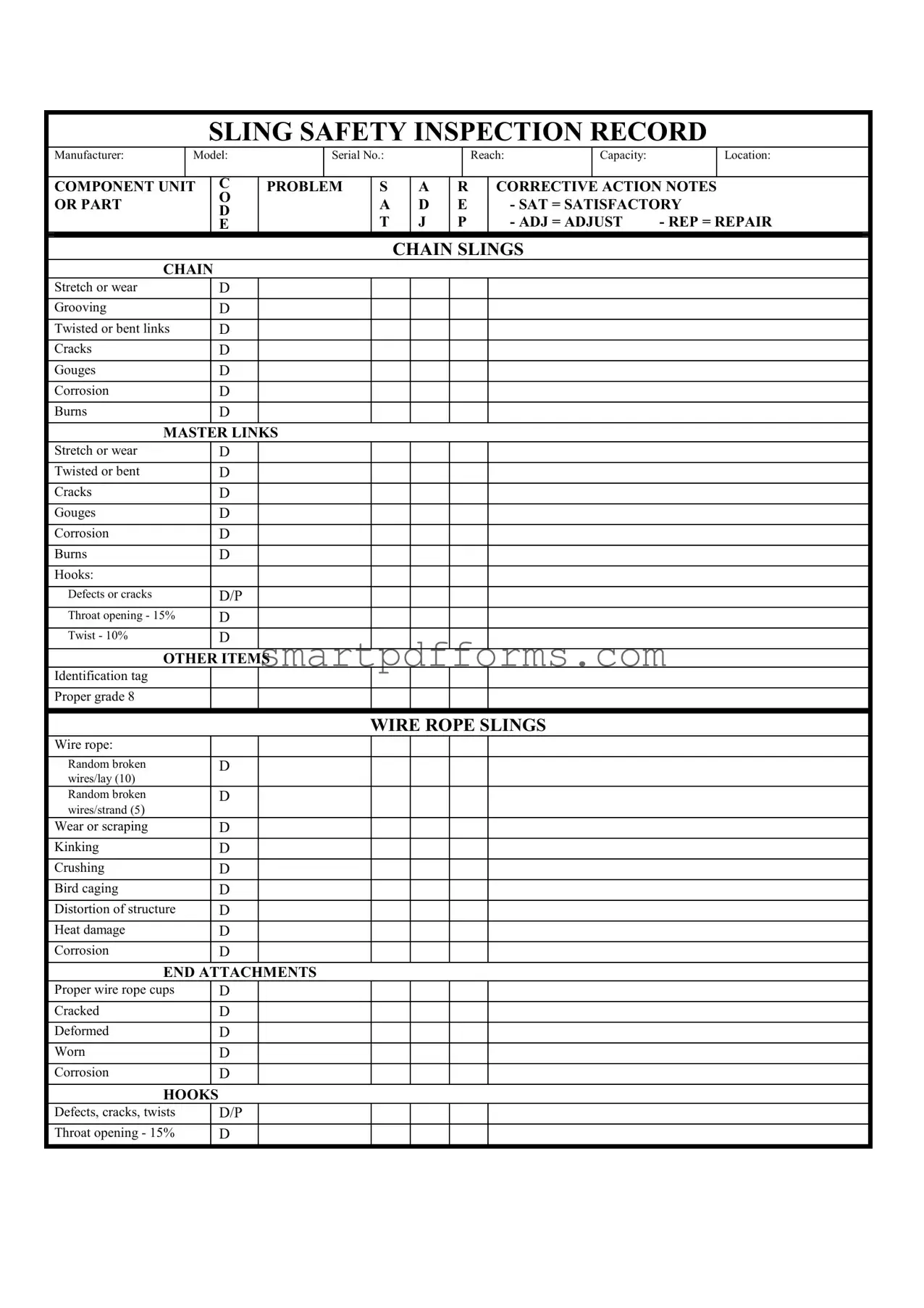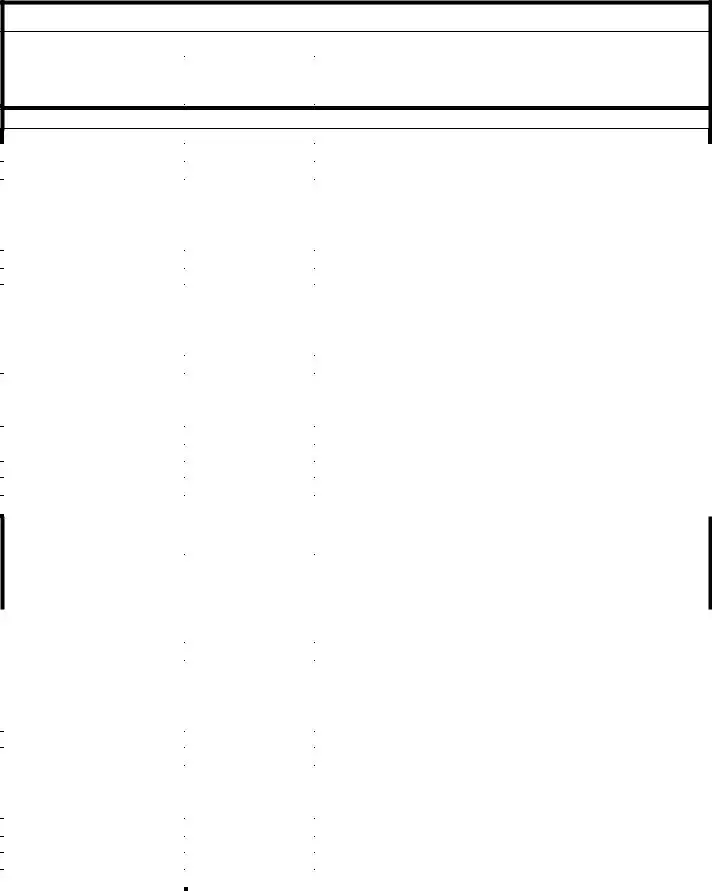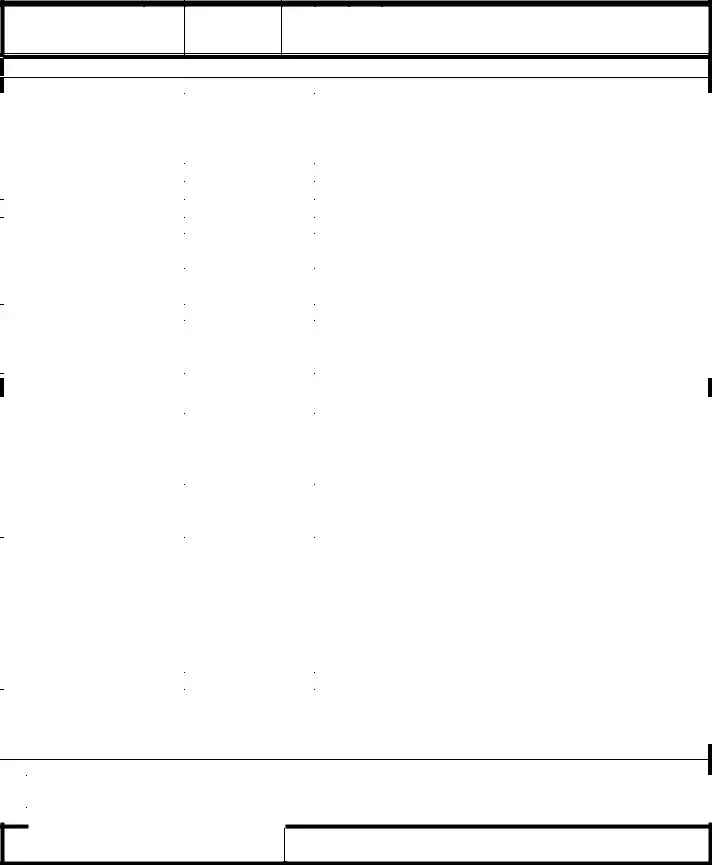Blank Sling Inspection Record PDF Template
The Sling Inspection Record form serves as a comprehensive checklist designed to ensure the safety and integrity of various types of slings used in lifting operations, detailing components, potential problems, and corrective actions required. It encompasses chain slings, wire rope slings, synthetic web slings, and metal, mesh slings, highlighting key areas such as wear, corrosion, damage, and the need for adjustments or repairs. For those responsible for maintaining the safety of lifting equipment, completing and submitting this form is crucial for compliance and operational safety; click the button below to start the process.
Make This Document Now



 REMARKS
REMARKS 1. Inspection code intervals:
1. Inspection code intervals: